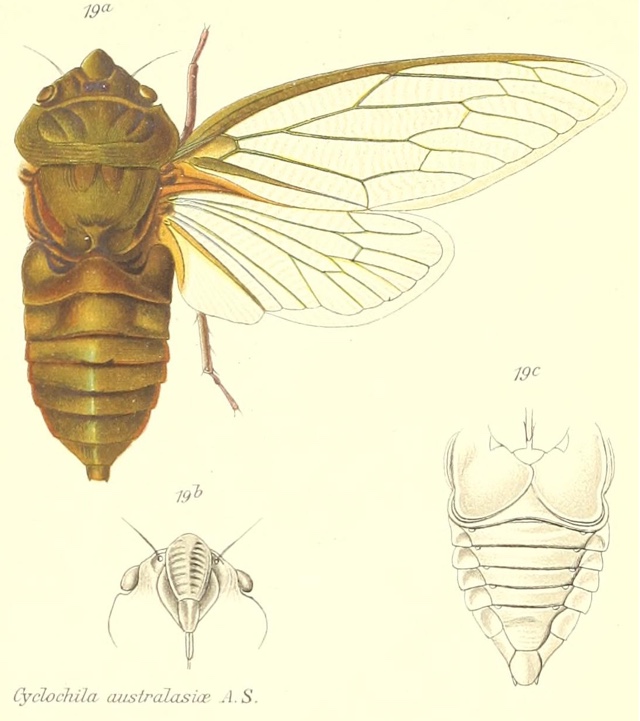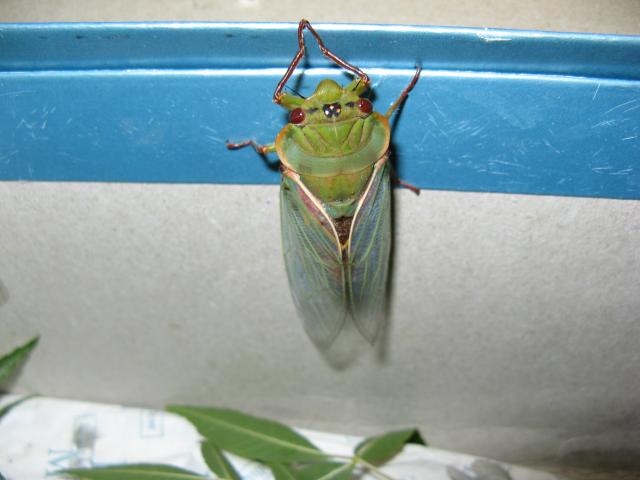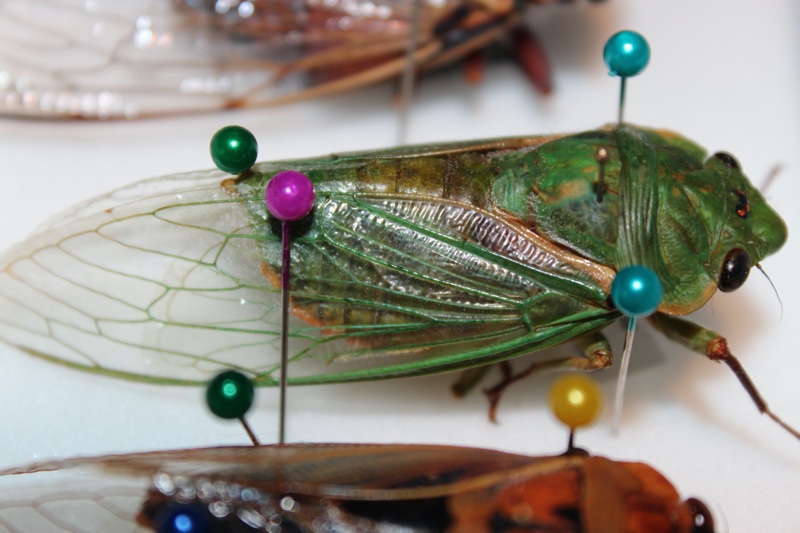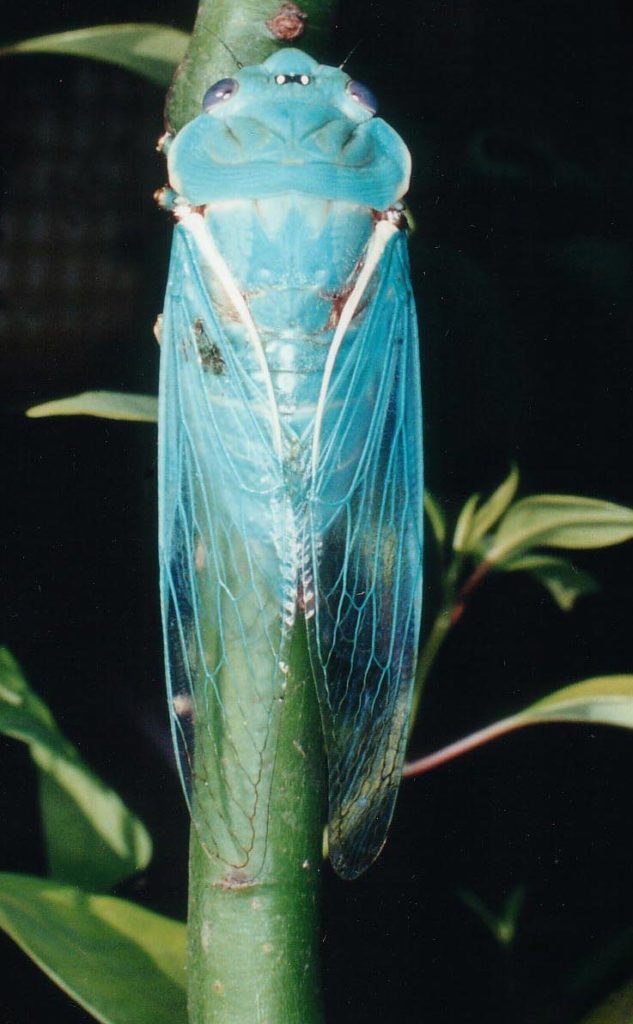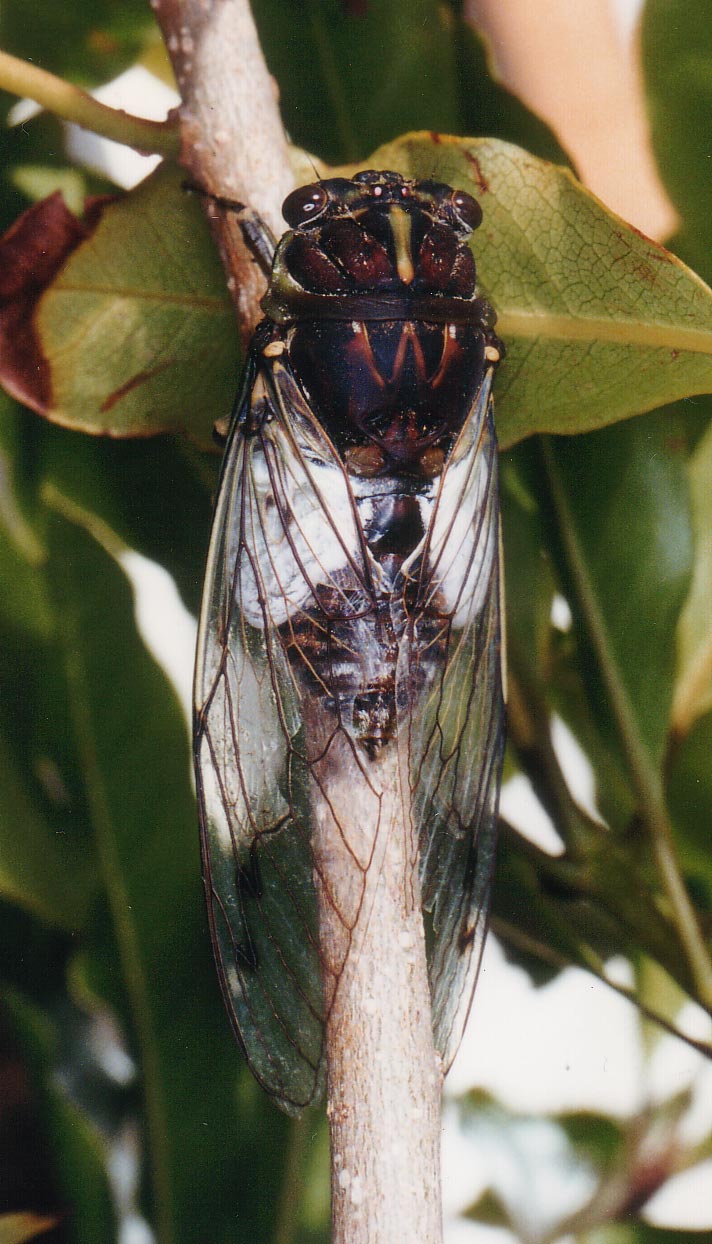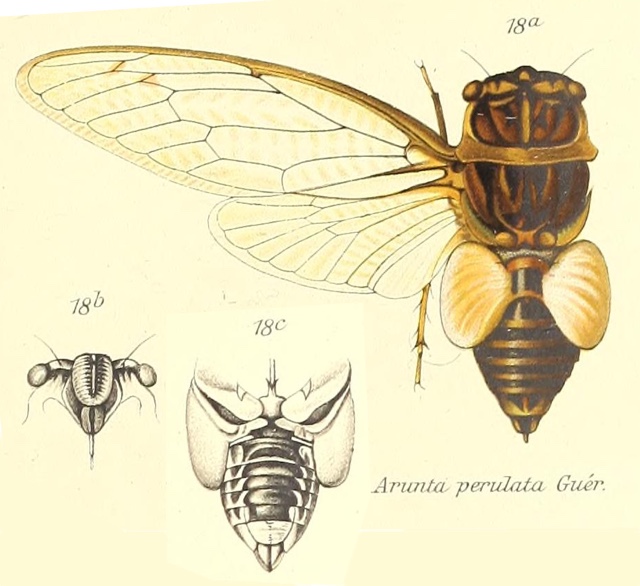Thopha sessiliba Distant, 1892 is found in northern Austalia and is commonly known as the Northern Double Drummer. Like other members of the Thophini tribe, T. sessiliba has prominent sack-like tymbal covers, from which they get their common name “drummers”.
Scientific classification:
Family: Cicadidae
Subfamily: Cicadinae
Tribe: Thophini
Genus: Thopha
Species: Thopha sessiliba Distant, 1892
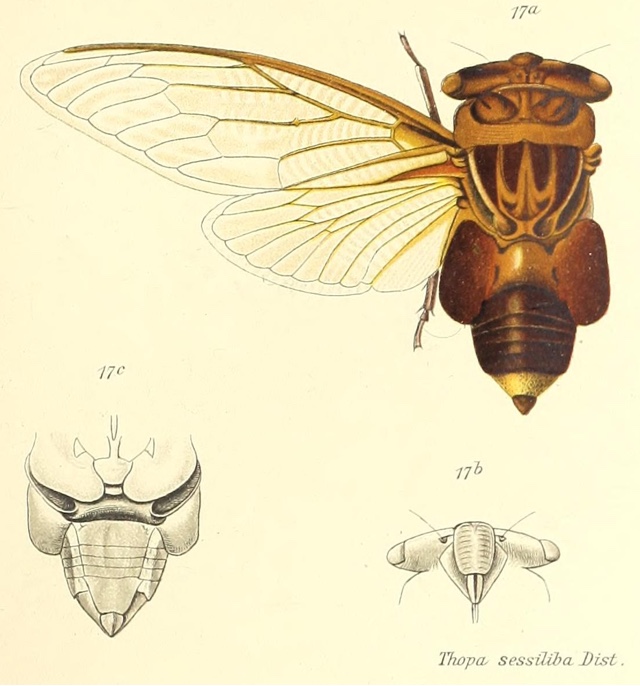
Thopha genus description by W. L. Distant:
Characters. — Head short, broad, equal in width to apex of pronotum; eyes more or less pedunculated, prominent; ocelli four times more distant from eyes than from each other; apex of clavus acuminate; front destitute of a longitudinal sulcus; pronotum with the lateral margins almost truncate or slightly convex, widened forwardly; tegmina vitreous, basal area not twice longer than broad, interior ulnar area broadened towards apex; ulnar veins distant at base; wings vitreous, with six apical areas; opercula short, transverse; tympanal coverings very strongly developed and sac-like, projecting beyond the lateral abdominal margins in male.
References:
- The illustration and genus description comes from the journal Genera Insectorum, and a specific article from 1913 by W. L. Distant titled Homoptera. Fam. Cicadidae, Subfam, Cicadinae. Read it on the Biodiversity Heritage Library website.
- Current species name verified using Allen Sanborn’s Catalogue of the Cicadoidea (Hemiptera: Auchenorrhyncha).
